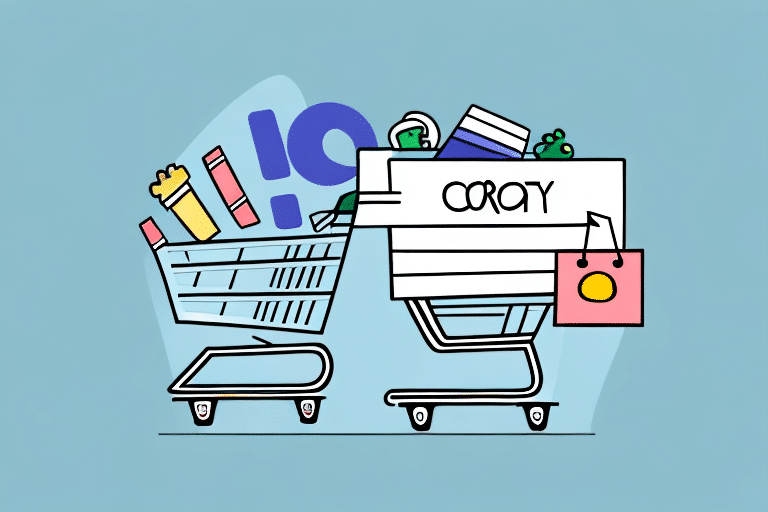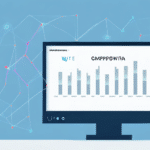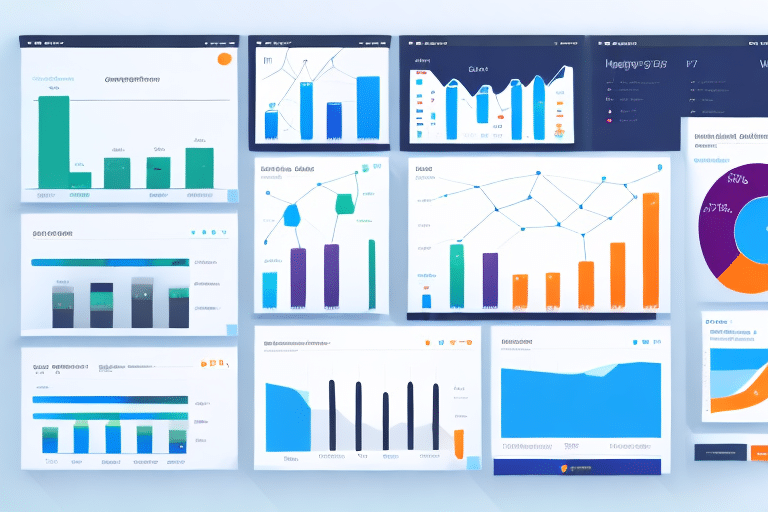How to Optimize Your Checkout Page for Maximum Conversion
If you run an e-commerce business, you know that your checkout page is one of the most critical pages of your website. It's where visitors become customers, and where revenue is generated. A well-optimized checkout page can mean the difference between success and failure for your online business. In this article, we'll explore various strategies to optimize your checkout page and maximize your conversion rates.
Importance of Checkout Page Optimization
Optimizing your checkout page is crucial because it directly impacts your conversion rates. A cumbersome, unclear, or confusing checkout process can lead to lost sales and frustrated customers. Ensuring a seamless and effortless checkout experience encourages customers to complete their purchases, enhancing your business's overall success. According to a Shopify report, the average cart abandonment rate is nearly 70%, highlighting the importance of optimizing every step of the checkout process.
Understanding Online Shoppers' Psychology
Psychology of Online Shoppers During Checkout
Online shoppers seek security, trust, and value during the checkout process. To effectively optimize your checkout page, consider the following psychological factors:
- Security: Display trusted payment options and security features to reassure customers.
- Value: Highlight free shipping, discounts, and satisfaction guarantees.
- Simplicity: Reduce decision fatigue by minimizing the number of options and steps in the checkout process.
Research by the Nielsen Norman Group shows that reducing friction in the checkout process can significantly increase completion rates.
The Power of Personalization
Personalization tailors the checkout experience to individual customer preferences and behaviors. Techniques include:
- Displaying recently viewed items or personalized product recommendations.
- Showing preferred payment methods and relevant shipping options based on browsing history.
- Adapting the language and tone to match customer preferences.
According to Salesforce, 76% of consumers expect companies to understand their needs and expectations, making personalization a key factor in enhancing the checkout experience.
Common Checkout Page Mistakes and How to Avoid Them
Avoiding common checkout page mistakes can significantly improve your conversion rates. Some of these mistakes include:
- Hidden Fees: Unexpected costs can deter customers from completing their purchase.
- Poor Site Performance: Slow loading times can frustrate users and lead to cart abandonment.
- Lengthy Forms: Excessive form fields can be tedious and discourage customers from finishing the checkout.
- Lack of Trust Signals: Without visible security badges or trust indicators, customers may hesitate to enter their payment information.
- Complicated Checkout Flow: A convoluted checkout process can confuse customers and increase the likelihood of abandonment.
Additionally, not offering multiple payment options can turn away potential customers who prefer specific payment methods. Ensure you provide a variety of payment options such as credit cards, PayPal, and Apple Pay to cater to different preferences.
Designing a User-Friendly and Trustworthy Checkout Page
Best Practices for Design
Creating a user-friendly checkout page involves several best practices:
- Clean and Consistent Design: Maintain a simple and uncluttered layout that aligns with your brand.
- Minimize Distractions: Remove unnecessary elements that can divert attention away from the checkout process.
- Clear Error Messages: Provide specific and helpful error messages to guide users in correcting any issues.
- Pre-fill Form Fields: Reduce the effort required by auto-filling fields where possible.
- Use Relevant Visuals: Incorporate images or videos that can simplify the checkout process or engage customers.
Moreover, offering multiple payment options and ensuring the security of the checkout process by displaying trust badges can enhance customer confidence and increase conversions.
Enhancing Trust Signals
Trust signals are essential for building credibility and assuring customers that their information is secure. Key trust signals include:
- Security Badges and SSL Certificates: Indicate that the website is secure for transactions.
- Social Proof: Display customer reviews, ratings, and product endorsements to build trust.
- Clear Privacy Policy: Provide a detailed privacy policy to inform customers about how their data is used and protected.
- Money-Back Guarantee: Offering a satisfaction guarantee can reassure customers about their purchase.
Incorporating these elements can significantly boost customer trust and lead to higher conversion rates. A study by Rethink Commerce shows that trust signals can improve conversion rates by up to 300%.
Simplifying the Checkout Process to Reduce Abandoned Carts
Reducing cart abandonment is critical for increasing sales. Simplify the checkout process by:
- Limiting Form Fields: Ask only for essential information to streamline the process.
- Providing Clear Payment Options: Make it easy for customers to choose their preferred payment method.
- Allowing Guest Checkout: Enable customers to complete their purchase without the need to create an account.
- Optimizing for Mobile Devices: Ensure the checkout process is smooth and easy to navigate on smartphones and tablets.
By addressing these areas, you can minimize friction points that may cause customers to abandon their carts. According to Shopify, simplifying the checkout process can reduce cart abandonment rates by up to 10%.
Optimizing for Mobile and Payment Gateways
Making Mobile Checkout Easy
With the increasing use of mobile devices for online shopping, optimizing your checkout page for mobile is essential. Here are some strategies:
- Responsive Design: Ensure your checkout page adapts to various screen sizes for a seamless experience.
- Large, Clickable Buttons: Make buttons easy to tap with fingers to prevent errors and frustration.
- Fast Loading Times: Optimize images and code to ensure quick load times on mobile connections.
- Streamlined Checkout Flow: Reduce the number of steps and simplify navigation for mobile users.
Additionally, offering multiple payment options such as digital wallets (e.g., PayPal, Apple Pay) can enhance the mobile checkout experience and increase conversion rates. According to a report by eMarketer, mobile commerce continues to grow, making mobile optimization crucial for e-commerce success.
Optimizing Your Payment Gateway for Faster Transactions
The payment gateway is a critical component of your checkout page that can impact conversion rates. To optimize your payment gateway:
- Use a Trusted Payment Gateway: Choose reliable and secure payment gateways to ensure fast and secure transactions.
- Integrate Seamlessly: Ensure the payment gateway is well-integrated with your website design for a smooth checkout experience.
- Offer Multiple Payment Methods: Provide a variety of payment options, such as credit cards, PayPal, and mobile payments, to cater to different customer preferences.
- Implement Fraud Prevention Measures: Use address verification systems, require CVV codes, and monitor transactions for suspicious activity to protect your business and customers.
Implementing these strategies can enhance transaction speed and security, leading to increased customer satisfaction and higher conversion rates.
Tracking, Analyzing, and Continuously Improving Your Checkout Page
Tracking and Analyzing Performance Metrics
Monitoring and analyzing key performance metrics is critical for understanding and improving your checkout page. Important metrics include:
- Cart Abandonment Rate: The percentage of customers who add items to their cart but do not complete the purchase.
- Time to Complete Purchase: The average time it takes for a customer to go from adding an item to the cart to completing the checkout.
- Average Order Value: The average amount spent per order, which can indicate the effectiveness of upselling strategies.
By regularly tracking these metrics using tools like Google Analytics, you can identify bottlenecks and areas for improvement, allowing for data-driven optimization of your checkout process.
Split Testing Strategies
Split testing, also known as A/B testing, involves testing different versions of your checkout page to determine which one generates more conversions. Here are some strategies:
- Test Different Elements: Experiment with variations in copy, design, layout, and button placements to see what resonates best with your audience.
- Analyze Results: Use statistical analysis to determine which version led to the greatest increase in conversions.
- Implement Winning Variations: Apply the successful elements from your tests to continually optimize your checkout page.
Continuous split testing allows you to make informed decisions that drive higher conversion rates. Resources like VWO's guide to A/B testing can help you effectively implement these strategies.
User Feedback and Continuous Optimization
Collecting and analyzing user feedback provides valuable insights into customer pain points and preferences. Methods include:
- Surveys and questionnaires post-purchase.
- Usability testing sessions to observe real user interactions.
- Analyzing customer support inquiries related to the checkout process.
Incorporate the feedback to make iterative improvements, ensuring that the checkout experience evolves with customer needs and industry best practices.
Finalizing Your Sale with Effective Thank-You Pages and Confirmation Emails
After a customer completes the checkout process, it's essential to reinforce the positive experience through:
- Thank-You Pages: Display order details, estimated delivery dates, and personalized recommendations to engage customers further.
- Confirmation Emails: Send detailed emails outlining the purchase, providing support resources, and encouraging future purchases or referrals.
A well-crafted finalization process can enhance customer relationships and promote repeat business. According to a BakeryMetrics study, effective thank-you pages and confirmation emails can increase customer retention rates by up to 30%.
Continuously Testing and Optimizing Your Checkout Page for Maximum Results
Optimizing your checkout page is not a one-time event; it's an ongoing process. Continuously testing your checkout page for performance and conversion metrics and seeking to improve will help you achieve maximum results. Implement strategies such as:
- A/B Testing: Test different versions of your checkout page to determine which elements perform better.
- User Feedback: Collect feedback from customers to understand their pain points and preferences.
- Implementing New Technologies: Stay updated with the latest e-commerce trends and technologies to enhance your checkout experience.
By consistently refining and perfecting the checkout process, you'll create a seamless experience that leads to loyal customers and increased revenue.




















